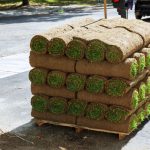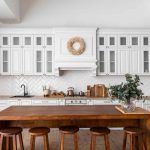Introduction
Refacing kitchen cabinets is an excellent way to breathe new life into your kitchen without the cost and hassle of a complete renovation. Whether you’re looking to update the style, enhance functionality, or give your kitchen a fresh look, refacing cabinets can be a rewarding project. In this guide, we’ll walk you through how to reface kitchen cabinets, providing detailed insights and tips to ensure a successful transformation.
Understanding Cabinet Refacing
What is Cabinet Refacing?
Cabinet refacing involves updating the external appearance of your cabinets while retaining the existing structure. It’s a cost-effective alternative to replacing cabinets entirely, making it an ideal option for those looking to refresh their kitchen on a budget.
Why Choose Cabinet Refacing?
Refacing offers several advantages, such as:
- Cost-Effective Solution
Cabinet refacing is significantly more budget-friendly than a complete cabinet replacement, making it an attractive option for homeowners looking to upgrade their kitchen without breaking the bank.
- Minimal Disruption
Unlike a complete renovation, cabinet refacing causes minimal disruption to your daily life. The process is typically faster, allowing you to enjoy your updated kitchen sooner.
- Environmentally Friendly
Choosing to reface cabinets instead of replacing them reduces waste and is a more environmentally sustainable option.
Preparing for Cabinet Refacing
Assessing Your Cabinets
Before you start the refacing process, it’s crucial to assess the condition of your cabinets. Look for signs of damage, such as warped or cracked wood, and ensure the cabinet frames are sturdy. If the structure is sound, refacing is a viable option.
Gathering Necessary Tools and Materials
Tools Needed for Cabinet Refacing
Ensure you have the following tools:
- Screwdriver
- Putty knife
- Sandpaper
- Circular saw
Materials for Refacing
- Cabinet veneer or laminate
- New cabinet doors and drawer fronts
- Hardware (handles, knobs, hinges)
Step-by-Step Guide to Cabinet Refacing
Step 1 – Remove Cabinet Doors and Drawers
Begin by carefully removing all cabinet doors and drawers. Use a screwdriver to detach hinges and handles, and label each piece to ensure easy reassembly.
Step 2 – Clean and Sand Surfaces
Thoroughly clean cabinet surfaces to remove grease and dirt. Once cleaned, use sandpaper to roughen the surfaces, promoting better adhesion for the new veneer or laminate.
Step 3 – Apply Veneer or Laminate
Carefully cut the veneer or laminate to fit the cabinet surfaces. Use a strong adhesive to secure the material, ensuring a smooth and even application.
Tip: Pay Attention to Detail
Take your time to ensure precise cuts and proper alignment, paying particular attention to corners and edges for a polished finish.
Step 4 – Install New Doors and Drawer Fronts
Attach the new cabinet doors and drawer fronts using the provided hardware. This is an excellent opportunity to update the style of your kitchen by choosing modern, stylish designs.
Considerations for Door and Drawer Selection
- Choose durable materials that can withstand kitchen wear and tear.
- Ensure the new doors align perfectly for a professional look.
Final Touches and Considerations
Step 5 – Add Finishing Touches
Install new handles, knobs, and hinges to complete the look of your refaced cabinets. This small detail can have a significant impact on the overall aesthetic of your kitchen.
Considerations for Long-Term Maintenance
Regular Cleaning
Keep your refaced cabinets looking new by cleaning them regularly with mild, non-abrasive cleaners.
Address Issues Promptly
If you notice any issues, such as peeling veneer or loose hardware, address them promptly to prevent further damage.
Enhancing the Refacing Experience
Choosing the Right Materials for Refacing
When refacing kitchen cabinets, the materials you select are pivotal in the overall outcome. Opt for high-quality veneer or laminate that complements your kitchen’s style and is durable enough to withstand daily wear and tear. Consider consulting with a professional or visiting a home improvement store to explore a variety of textures, finishes, and colors.
Exploring Sustainable Options
Eco-Friendly Veneer Choices
If sustainability is a priority, explore eco-friendly veneer options. Bamboo and reclaimed wood veneers are excellent choices, adding a touch of uniqueness to your kitchen while minimizing environmental impact.
Low-VOC Adhesives
Choose adhesives with low volatile organic compound (VOC) levels to ensure your cabinet refacing project is environmentally conscious. Low-VOC adhesives contribute to better indoor air quality, making your kitchen healthier.
Creative Refacing Ideas
Adding Glass Inserts
Consider replacing some cabinet doors with glass inserts for a stylish and open feel. This creates visual interest and allows you to showcase your favorite kitchenware.
Types of Glass Inserts
- Clear Glass: Ideal for displaying neatly organized dishes or colorful kitchen items.
- Frosted Glass: Offers a more subtle look, perfect for those who want a hint of transparency without revealing the cabinet’s contents.
Incorporating Open Shelving
Benefits of Open Shelving
- Visual Appeal: Open shelving adds an airy and spacious feel to your kitchen.
- Accessibility: It provides easy access to frequently used items, making your kitchen more functional.
Organizing Tips for Open Shelves
- Use decorative baskets or containers to keep items organized.
- Arrange items with varying heights for a visually dynamic display.
Customizing Cabinet Hardware
Unique Hardware Options
Consider unconventional hardware choices such as:
- Leather Pulls: A modern and luxurious touch.
- Vintage Knobs: For a touch of nostalgia and character.
Mixing and Matching Hardware
Combine different hardware styles for an eclectic look that adds personality to your refaced cabinets.
Troubleshooting Common Issues
Dealing with Veneer or Laminate Issues
Addressing Peeling Veneer
If you notice any signs of peeling veneer, act promptly to avoid further damage. Use wood glue to secure the loose edges and press them down gently until the glue dries.
Repairing Scratches and Nicks
For minor scratches or nicks, use a matching touch-up kit to restore the surface. For more profound damage, consider consulting a professional for advice on repairs.
Aftercare and Maintenance Tips
Long-Term Care for Refaced Cabinets
Ensuring the longevity of your refaced cabinets involves consistent maintenance:
Protective Measures
- Place protective pads inside cabinets to prevent dishes and utensils from scratching the newly refaced surfaces.
Regular Inspections
Conduct periodic inspections to identify issues early on, allowing you to address them before they become more significant problems.
Conclusion
Refacing kitchen cabinets is a DIY-friendly project that can transform the heart of your home without a hefty price tag. By following this comprehensive guide, you’ll be well-equipped to reface your cabinets confidently, creating a fresh, modern, and inviting kitchen. Remember, attention to detail and careful planning are crucial to achieving professional-looking results. Get started on your cabinet-refacing journey and enjoy the beauty of a revitalized kitchen space.






